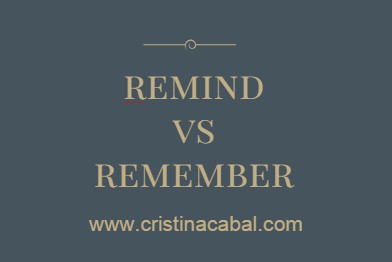Today the focus is on the verb “make” and what it means when it collocates with four
different prepositions, namely” from”, “of” “by” and “with”. Choosing the right preposition can be a bit tricky sometimes. I hope the explanation below helps you understand a bit better the differences.
🙁 She claimed that the jumper was made from wool
🙂 She claimed that the jumper was made of wool
🙁 Many components are made by plastic
🙂 Many components are made of plastic
🙁 Margarine, which is made by natural ingredients, is more acceptable
🙂 Margarine, which is made from natural ingredients, is more acceptable
♥Use made from when the original materials have been completely changed  and cannot be recognised. “Bread is made from flour and water”.
and cannot be recognised. “Bread is made from flour and water”.
♥ Use made of when the original materials have not been completely changed and you can still see them. “Their dining table is made of solid oak”.
♥ Use made by when you mention the name of the company or person that has made something (NOT the names of materials). “This new razon is made by Wilkinson Sword”.
♥Use made with to talk about one of several ingredients or materials (for example in cooking). “Paella is made with rice “
Source: Longman Dictionary of Common Errors and Practical English Usage
Now, let’s try a quiz!
of
from
of
by
with
of
from
by



 *
* going to help my students see the difference between these two verbs
going to help my students see the difference between these two verbs  done without seeming like a nag? Is there a way to politely remind people to do things? Yes, there is: it’s called
done without seeming like a nag? Is there a way to politely remind people to do things? Yes, there is: it’s called